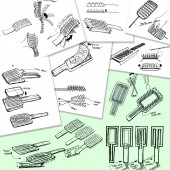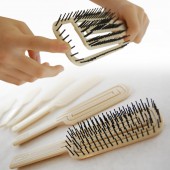MAZE hairbrush Easily remove trapped hair by Scott Shim, Morris Koo |
Home > Winners > #37537 |
| CLIENT/STUDIO/BRAND DETAILS | |
 |
NAME: The Ohio State University PROFILE: The Department of Design at the Ohio state University offers three major programs, each leading to the Bachelor of Science in Design (BSD) degree: Industrial Design, Interior Design, and Visual Communication Design. The Masters of Fine Arts (MFA) degree program offers two complementary areas of emphasis in Design Research and Development (DRD) or Digital Animation and Interactive Media (DAIM). The Department's degree programs are accredited by the National Association of Schools of Art and Design (NASAD), and the Interior Design major program is accredited separately by the Council for Interior Design Accreditation (CIDA). |
| AWARD DETAILS | |
 |
Maze Hairbrush Easily Remove Trapped Hair by Scott Shim, Morris Koo is Winner in Beauty, Personal Care and Cosmetic Products Design Category, 2014 - 2015.· Read the interview with designer Scott Shim, Morris Koo for design MAZE hairbrush here.· Press Members: Login or Register to request an exclusive interview with Scott Shim, Morris Koo. · Click here to register inorder to view the profile and other works by Scott Shim, Morris Koo. |
| SOCIAL |
| + Add to Likes / Favorites | Send to My Email | Comment | Testimonials | View Press-Release | Press Kit |
Did you like Scott Shim, Morris Koo's Cosmetic Product Design?
You will most likely enjoy other award winning cosmetic product design as well.
Click here to view more Award Winning Cosmetic Product Design.








